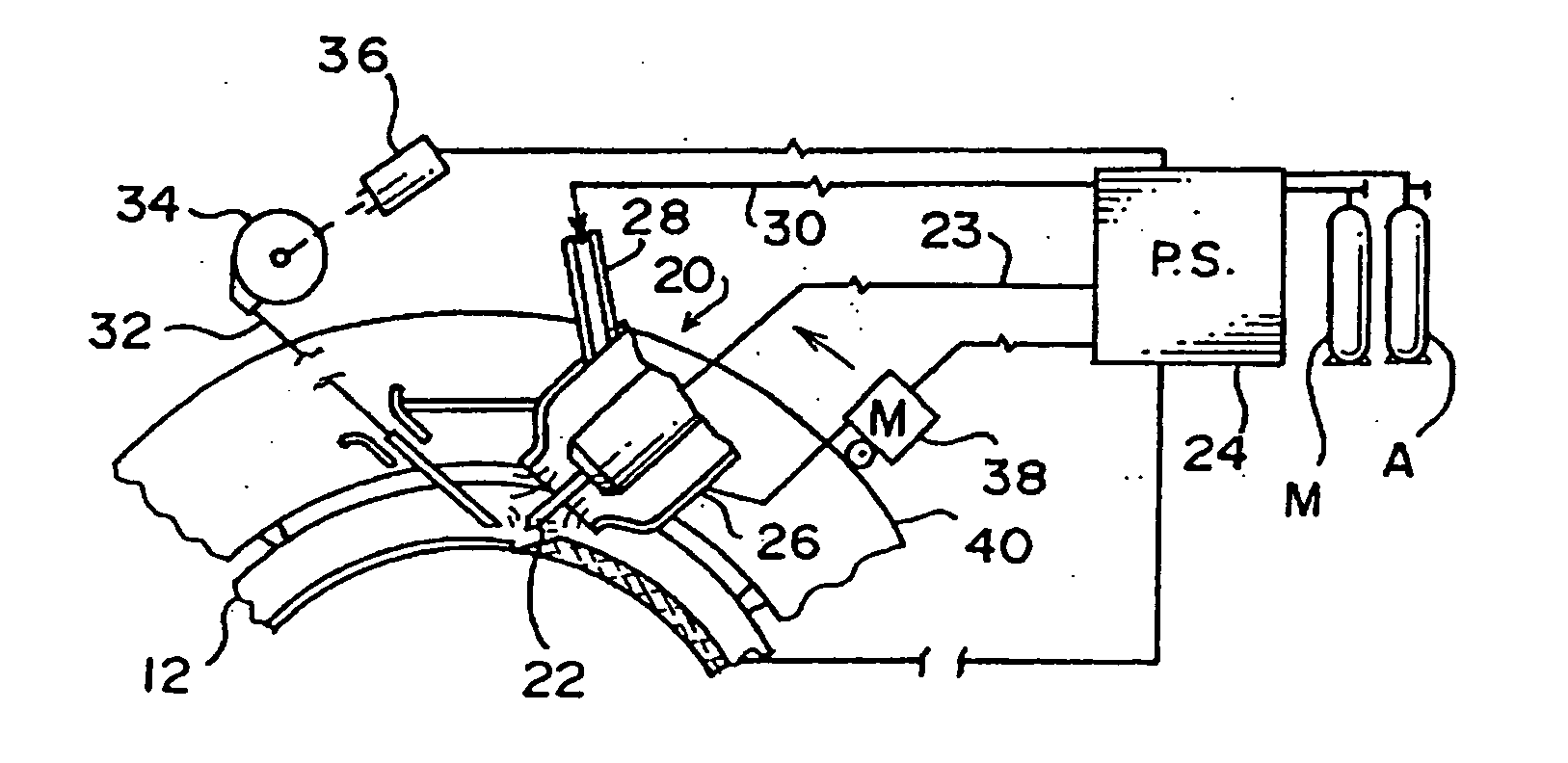Process for welding
a welding process and process technology, applied in the direction of welding/cutting media/materials, welding apparatus, manufacturing tools, etc., can solve the problems of unproductive causation factor, inability to achieve successful welding of such workpieces, and in particular workpieces made of carbon steel, and achieve the effect of improving the life of the electrod
- Summary
- Abstract
- Description
- Claims
- Application Information
AI Technical Summary
Benefits of technology
Problems solved by technology
Method used
Image
Examples
Embodiment Construction
[0027] With reference to the appended drawings:
[0028]FIG. 1 schematically illustrates a pair of non-stainless steel tubular workpieces to be buttwelded having beveled end joint preparations and an open root gap ready for carrying out a welding procedure in accordance with the prior art;
[0029]FIG. 2 is an enlarged view of the beveled joint area between the tubular workpieces illustrated in FIG. 1;
[0030]FIG. 3 shows a “J-type” joint preparation conventionally used for buttwelding with GTAW equipment; and
[0031]FIG. 4 schematically shows a welding procedure in accordance with the prior art being carried out using orbital GTAW equipment supplied with filler wire and both an argon-hydrogen shield gas mixture and argon gas alone.
DETAILED DESCRIPTION OF PREFERRED EMBODIMENTS OF THE INVENTION
[0032] In accordance with a prior art process as described in U.S. Pat. 5,686,002, and with reference to the drawings, non-stainless steel (e.g., carbon steel) metal workpieces 10, 12 to be buttweld...
PUM
| Property | Measurement | Unit |
|---|---|---|
| thicknesses | aaaaa | aaaaa |
| compression stress | aaaaa | aaaaa |
| area | aaaaa | aaaaa |
Abstract
Description
Claims
Application Information
 Login to View More
Login to View More - R&D
- Intellectual Property
- Life Sciences
- Materials
- Tech Scout
- Unparalleled Data Quality
- Higher Quality Content
- 60% Fewer Hallucinations
Browse by: Latest US Patents, China's latest patents, Technical Efficacy Thesaurus, Application Domain, Technology Topic, Popular Technical Reports.
© 2025 PatSnap. All rights reserved.Legal|Privacy policy|Modern Slavery Act Transparency Statement|Sitemap|About US| Contact US: help@patsnap.com


